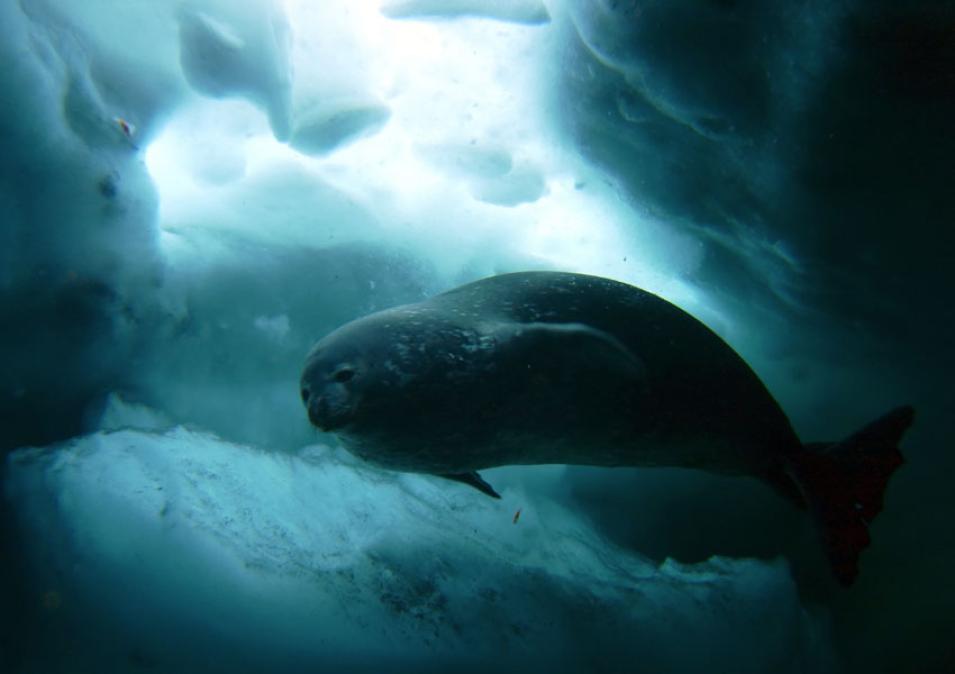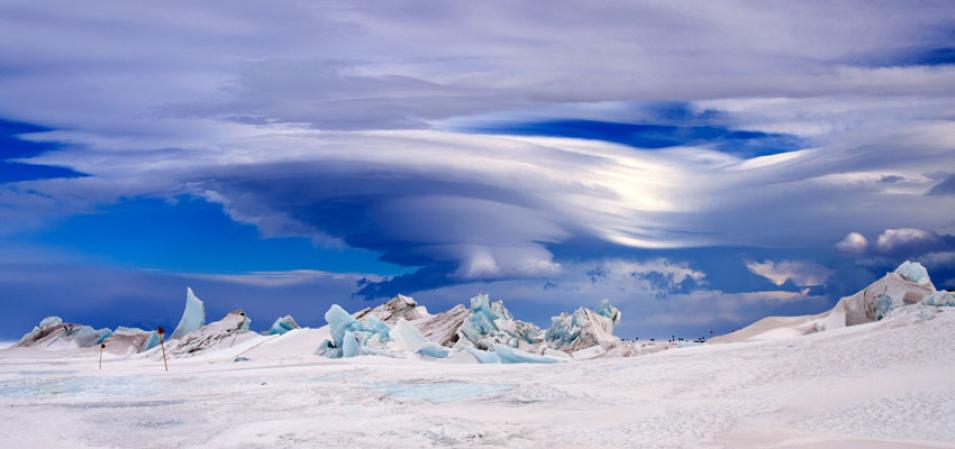References
Bintanja, R., G. J. Van Oldenborgh, S. S. Drijfhout, B. Wouters, and C. A. Katsman. 2013. Important role for ocean warming and increased ice-shelf melt in Antarctic sea-ice expansion. Nature Geoscience 6: 376–379, doi:10.1038/ngeo1767.
Cavalieri, D. J., C. L. Parkinson, P. Gloersen, and H. Zwally. 1996, updated yearly. Sea Ice Concentrations from Nimbus-7 SMMR and DMSP SSM/I-SSMIS Passive Microwave Data. Southern Hemisphere. Boulder, Colorado USA: NASA National Snow and Ice Data Center (NSIDC) DAAC.
Holland, P. R. 2014. The seasonality of Antarctic sea ice trends. Geophysical Research Letters 41, doi:10.1002/2014GL060172.
Holland, P. R. and Kwok, R. 2012. Wind driven trends in Antarctic sea-ice drift. Nature Geoscience 5: 872–875, doi:10.1038/ngeo1627.
Holland, P. R., N Bruneau, C. Enright, M. Losch, N. T. Kurtz, R. Kwok. 2014. Modeled trends in Antarctic sea ice thickness. Journal of Climate 27: 3,784–3,801, doi:10.1175/JCLI-D-13-00301.1.
Kirkman, C. H., C. M. Bitz. 2011. The effect of the sea ice freshwater flux on Southern Ocean temperatures in CCSM3: Deep-ocean warming and delayed surface warming. Journal of Climate 24: 2,224–2,237, doi:10.1175/2010JCLI3625.1.
Scambos, T. A., R. Ross, T. Haran, R. Bauer, and D.G. Ainley. 2013. A camera and multisensor automated station design for polar physical and biological systems monitoring: AMIGOS. Journal of Glaciology 59(214): 303–314, doi:10.3189/2013JoG12J170.
Stammerjohn, S., R. Massom, D. Rind, and D. Martinson. 2012. Regions of rapid sea ice change: An interhemispheric seasonal comparison. Geophysical Research Letters 39, L06501, doi:10.1029/2012GL050874.
For more information
NASA National Snow and Ice Data Center Distributed Active Archive Center (NSIDC DAAC)
| About the remote sensing data |
| Satellites |
Nimbus 7 and Defense Meteorological Satellite Program (DMSP) F8, F11, F13, F17 |
| Sensors |
Scanning Multichannel Microwave Radiometer (SMMR), Special Sensor Microwave/Imager (SSM/I), Special Sensor Microwave Imager/Sounder (SSMIS) |
| Data set |
Sea ice concentrations from Nimbus-7 SMMR and DMSP SSM/I-SSMIS Passive Microwave Data |
| Resolution |
25 kilometers |
| Parameter |
Sea ice concentration |
| DAAC |
NASA National Snow and Ice Data Center Distributed Active Archive Center (NSIDC DAAC) |
The photograph in the title graphic shows sea ice in the Bellingshausen Sea, off the coast of Antarctica, as seen from a NASA Operation IceBridge flight on October 13, 2012. (Courtesy M. Studinger/NASA)




